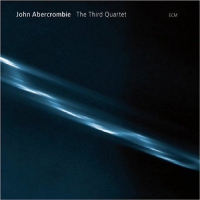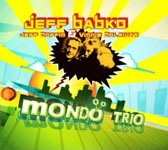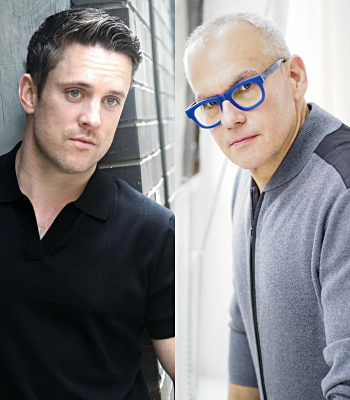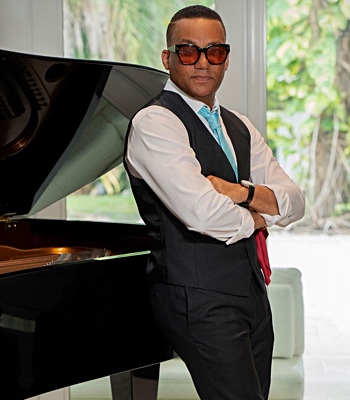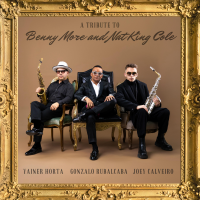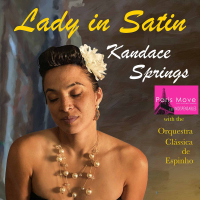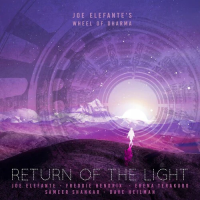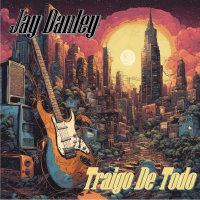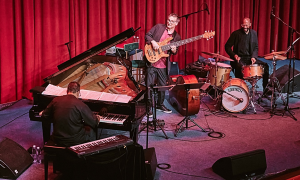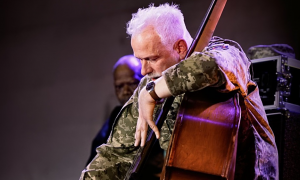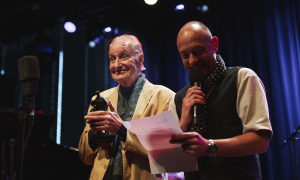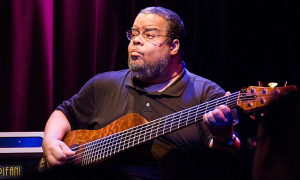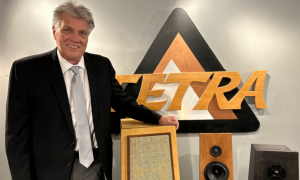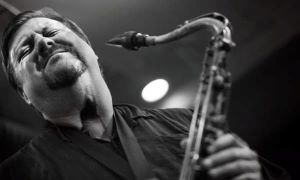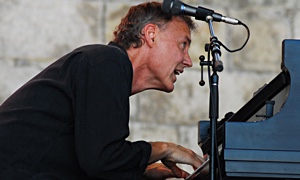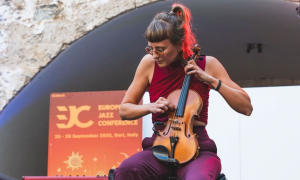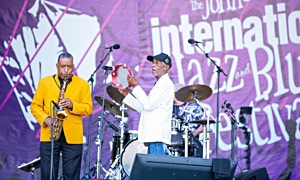Home » Jazz Articles » Profile » Muhal Richard Abrams: The Advancement of Creative Music
Muhal Richard Abrams: The Advancement of Creative Music
It
 At a certain point in the mid-1960s—the exact date escapes him—pianist/composer Muhal Richard Abrams, a lifelong resident of the South Side of Chicago, visited New York for the first time on a gig with saxophonist Eddie Harris at Harlem's Club Barron. "New York suited my energy, Abrams recalled. "Of course. But I was already in that sort of energy. I had no doubt that I could be in New York. No doubt at all.
At a certain point in the mid-1960s—the exact date escapes him—pianist/composer Muhal Richard Abrams, a lifelong resident of the South Side of Chicago, visited New York for the first time on a gig with saxophonist Eddie Harris at Harlem's Club Barron. "New York suited my energy, Abrams recalled. "Of course. But I was already in that sort of energy. I had no doubt that I could be in New York. No doubt at all. Doubt seems to be a concept foreign to Abrams, 76, who moved to New York permanently in 1975. In 1983, he established the New York chapter of the Association for the Advancement of Creative Musicians, commonly known as the AACM, which launches its twenty-fourth concert season on May 11, 2007 at the Community Church of New York with a recital featuring Abrams' quartet and a duo by Abrams with guitarist Brandon Ross.
The institutional pre-history of the AACM began in 1961, when Abrams and Harris joined a West Side trumpeter named Johnny Hines to organize an orchestra where local musicians could workshop their charts. By Harris' recollection, over one hundred musicians of various ages and skill levels attended. Although it disbanded within a few months, Abrams decided to begin another orchestra, which he called the Experimental Band. He recruited younger musicians like Roscoe Mitchell and Joseph Jarman, who were interested, as Abrams puts it, "in more original approaches to composing and performing music.
Over the next few years, musicians such as Malachi Favors, Leroy Jenkins, Anthony Braxton, Wadada Leo Smith and Kalaparusha Maurice McIntyre entered the mix to participate in the adventure. A certain momentum developed with the Experimental Band as the nucleus and in 1965 Abrams, fellow pianist Jodie Christian, trumpeter Phil Cohran and drummer Steve McCall convened a meeting towards the purpose of forming a new musicians' organization devoted to the production of original music with a collective spirit. Thus, the AACM was launched.
Under the organization's auspices, Abrams mentored composer/instrumentalist/improvisers like Mitchell, Jarman, Braxton, Smith, Henry Threadgill and George Lewis in their nascent years. He also spawned an infrastructure within which each individual had autonomy to assimilate and process an enormous body of music from a broad spectrum of sources in a critical manner and gave them manpower with whom to workshop and develop their ideas while evolving their respective voices.  The AACM first hit New York in May 1970, when cultural activist Kunle Mwanga produced a concert at the Washington Square Methodist Church with Leroy Jenkins and Anthony Braxton (who had relocated from Chicago three months earlier), their AACM mates Abrams, Smith and McCall and bassist Richard Davis (also a South Sider). At the time, Abrams had recorded two albums of his own music—Levels and Degrees of Light (Delmark, 1967) and Young At Heart, Wise In Time (Delmark, 1969). Added to the mix by 1975 were Things To Come From Those Now Gone (Delmark, 1972) and solo piano sessions Afrisong (India Navigation, 1975) and Sightsong (Black Saint, 1975).
The AACM first hit New York in May 1970, when cultural activist Kunle Mwanga produced a concert at the Washington Square Methodist Church with Leroy Jenkins and Anthony Braxton (who had relocated from Chicago three months earlier), their AACM mates Abrams, Smith and McCall and bassist Richard Davis (also a South Sider). At the time, Abrams had recorded two albums of his own music—Levels and Degrees of Light (Delmark, 1967) and Young At Heart, Wise In Time (Delmark, 1969). Added to the mix by 1975 were Things To Come From Those Now Gone (Delmark, 1972) and solo piano sessions Afrisong (India Navigation, 1975) and Sightsong (Black Saint, 1975).
Once settled in New York, however, Abrams would record prolifically for the next two decades, with fifteen albums on Black Saint in addition to two dates for Novus, two for New World Countercurrents and one for UMO. You can't pigeonhole his interests—in Abrams' singular universe, elemental blues themes and warp speed post-bop structures with challenging intervals coexist comfortably with fully-scored symphonic works, string quartets, saxophone quartets, solo and duo piano music and speech-sound collage structures.
Abrams resists the idea that location factors into the content that emerges from his creative process. "What affected my output is the opportunity to record, he says. "In Chicago, if an opportunity presented itself, I created something for the occasion. When I got here [NYC], there was no difference. I am always composing and practicing for myself. Actually, it's more like studying than composing; I research and seek and analyze music—or sound, rather, because sound precedes music itself—and things come up. When a recording or something else comes along, I put some of those things together and it becomes a recording. Of course, in New York, I'm hearing more around me, but it doesn't make me process things any differently. I'm still dealing with my individualism.
The notion of following one's own muse at whatever cost was embedded in South Side culture during the years after World War II, when African-Americans were migrating en masse from Mississippi, Louisiana and Alabama to Chicago for factory, railroad and stockyard jobs. As Harris told me on a WKCR interview in 1994: "In Chicago, you could hear Gene Ammons in one club, Budd Johnson in another or Tom Archia or Dick Davis—just speaking of the saxophone. Then there were all sorts of piano players that were really...different. You'd go to one club and the guy didn't sound a little different from the guy down the street. It was totally different.
"You were expected to do whatever it is that you felt you wanted to do and nobody said a word, Abrams says of the ethos of the South Side's world-class musician pool. "The jam sessions were like that. We played bebop and kept up with the geniuses like Bird and them. But I was never that interested in copying something and then using it for myself. I was interested in copying it in order to analyze it. Then I would decide how I would use or do that same thing. Chicago was full of musicians who distinguished themselves as individuals.
As an example he cites pianist John Young, best known outside Chicago for his work with tenorist Von Freeman and a prominent stylist since the 1940s. "When you listen to John, you hear remnants of [Earl] Fatha Hines, Abrams notes, leaving unsaid Hines' presence in Chicago from 1926 until the late 1940s. "He was very influenced by Fatha Hines, but John had his own way. We were impressed with the individualism from him, Ahmad Jamal, Von Freeman, Chris Anderson, Johnny Griffin, Ike Day and Sun Ra and the Arkestra. People wonder how an AACM could develop in a city like that. It's because you could do individual things and nobody bothered you.  Abrams himself is a self-taught pianist and composer. "I used to play sports, but for some reason, whenever I'd hear musicians perform, I had to stop to listen, he recalls. "It fascinated me and one day I decided that I wanted to be a musician. So I took off and started to seek out information about how to play the piano.
Abrams himself is a self-taught pianist and composer. "I used to play sports, but for some reason, whenever I'd hear musicians perform, I had to stop to listen, he recalls. "It fascinated me and one day I decided that I wanted to be a musician. So I took off and started to seek out information about how to play the piano.
Although Abrams attended DuSable High School, where the legendarily stern band director Walter Dyett held sway, he preferred sports to school-sponsored music programs. But by 1946, he decided to enroll in music classes at Roosevelt University in the Loop. "I didn't get too much out of that, because it wasn't what I was hearing in the street, he says. "I decided to study on my own. I don't know why, but I've always had a natural ability to study and analyze things. I used that ability, not even knowing what it was (it was just a feeling) and started to read books.
From there, I acquired a small spinet piano and started to teach myself how to play the instrument and read the notes—or, first of all, what key the music was in. It took time and a lot of sweat. But I analyzed it and before long I was playing with the musicians on the scene. I listened to [Art] Tatum, Charlie Parker, [Thelonous Monk], Bud Powell and many others and concentrated on Duke [Ellington] and Fletcher Henderson for composition. Later I got scores and studied more extensive things that take place in classical composition and started to practice classical pieces on the piano, as I do now.
Abrams documents all his New York performances. Still, the decade between 1996 and Streaming (Pi, 2006), a compelling triologue between Abrams, Lewis and Mitchell, shows only one, self-released, issue under Abrams' name. As of this writing, no releases were scheduled for 2007. "That's okay, Abrams says. "I think things that are supposed to reach the public, eventually will. I understand that people want to be able to hear whatever is happening at any given time. However, the recording industry has ways that it does things and sometimes this may not be consistent with what the musician wants to do.
Business has a right to be whatever it is and the artist has a right to be whatever the artist wants to be. I also think the fact that musicians can do these things themselves today because of technology causes output to come out a little bit slower. But the quality is pretty much equal, often higher, than it used to be, because the musician can spend more time preparing the output. It's important for people to hear what I do, but the first point of importance is my being healthy enough to do it. I don't worry about whether it gets distributed right away.
"I always felt that you need to be about the work you need to do and that's to find out about yourself. That's pretty much a full-time job. You pay close attention to others, but the work that you have to do for yourself is the most difficult. I seem to move forward every time I reflect on the fact that I don't know enough. If you feel you have something, it's very important to get that out and develop it. Health is first. But your individualism I think is a close second.
Selected Discography
Muhal Richard Abrams/George Lewis/Roscoe Mitchell, Streaming (Pi, 2005)
Muhal Richard Abrams Orchestra, Blu Blu Blu (Black Saint, 1990)
Muhal Richard Abrams Octet, View From Within (Black Saint, 1984)
Muhal Richard Abrams, Mama and Daddy (Black Saint, 1980)
Muhal Richard Abrams, Levels and Degrees of Light (Delmark, 1967)
Creative Construction Company, Vol. 1 & 2 (Muse, 1970)
Photo Credit
Courtesy of AACM
Tags
PREVIOUS / NEXT
Support All About Jazz
 All About Jazz has been a pillar of jazz since 1995, championing it as an art form and, more importantly, supporting the musicians who make it. Our enduring commitment has made "AAJ" one of the most culturally important websites of its kind, read by hundreds of thousands of fans, musicians and industry figures every month.
All About Jazz has been a pillar of jazz since 1995, championing it as an art form and, more importantly, supporting the musicians who make it. Our enduring commitment has made "AAJ" one of the most culturally important websites of its kind, read by hundreds of thousands of fans, musicians and industry figures every month.



